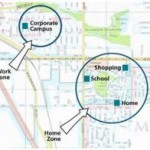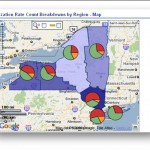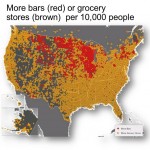13 Jul 2011 Location Intelligence | Combining Spatial Data & BI
The combination of all business data with location-related data offers a new view on expectations and opportunities for organisations. The continuous growth and sophistication of geographical services allow users to incorporate spatial information into a Business Intelligence solution and use it as a basis for better decision making and providing higher value services. Location intelligence offers organisations opportunities to streamline their business processes and customer relationships to improve performance and results.
First let’s have a look at what Spatial information is
· Every Citizens Address
· Every House for Sale
· Social Economic Figures
· Every Train, Car or Ship
The ubiquity of geographical services, and the increasing sophistication with which users can consume data means that spatial information is just another component to be incorporated into a Business intelligence solution and used as a basis for making better decisions and providing higher value services.
Now you may ask, how can I integrate this information into software applications?
Below are listed a few example questions to be asked:
· How big is my market area?
· What is my share of market area?
· Which market areas offer the greatest potential for growth?
· What is the spending potential for my product in this market?
Who is Location Intelligence For?
Location effects virtually every business and government entity across almost every functional area. BI tools analyse the basic who, what, when and how questions, however the where gets little attention. For this Location Intelligence capability is needed. In adding the “Where” factor to the analyses it enhances the “Who” dimension by integrating third party data (i.e. market potential) to internal enterprise data.
Benefits of Location Intelligence:
Location Intelligence provides you with the ability to visualize your spatial or geographic data on maps, floorplans etc. The style of visualization allows you to easily see patterns which may be hidden in different circumstances.
· Unlike traditional tables / grids and charts, map visualizations quickly relate BI data with locations that are meaningful to your business and detect geographic trends such as customer clusters or outlyers.
· Complete geographic visualization of the full field area; so when overlaying your data onto a map not only do you see where you are on the map but you will also see where you are not located. This piece of information can give you valuable insight into the potential markets you could enter.
· Animated data to show the changes over time. This information provides you with an understanding of how trends are changing and hot spots are moving geographically.
Conclusion
Innovative visualization technology presents detailed data as information in an understandable manner to users; in leading Business Intelligence (BI) environments, the visualization must be based on spatial (geographic) data. Combining spatial data with visualization technology delivers accurate, high-impact information. Oracle solutions support the integration of Location Intelligence for enhanced user understanding and insight.





